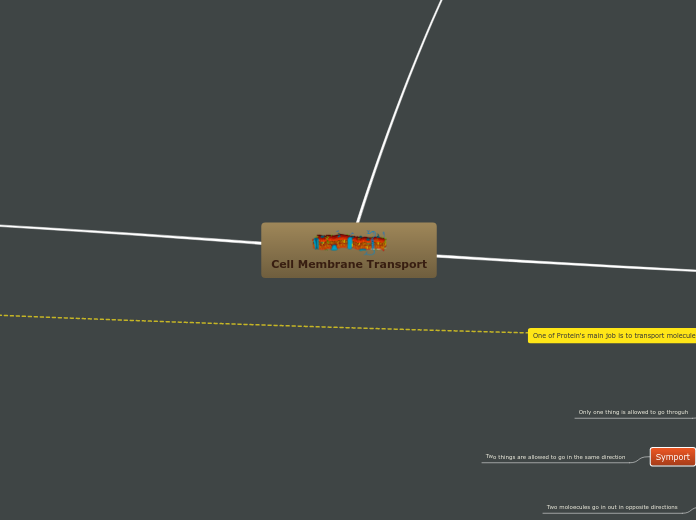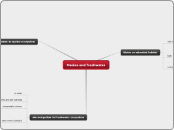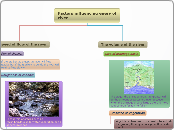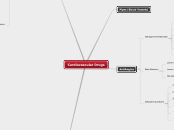Floating topic
Channel protein
It is always open and allows specific molecules in and its always fast transport.
Carrier protein
It is open or closed and depending on the chemical that is given it is slower.
Cell Membrane Transport
Structure: Proctection and locomotion
Protein:
Proteins functions includes; Transporting molecules, and it's important in chemical reactions since it gives off important enzymes. Sends signals, some proteins have cell receptors to help identify/recognize cells, helps attach cells together, and lastly it's attached to cytoskeleton/extracellular matrix.
Peripheral protein
These protein are not embedded into the cell membrane but float around it. It is entirely hydrophilic.
Integral protein
Proteins that are embedded in the cell membrane. It has both a hydrophilic area and hydrophobic area.
Glycoprotein
It has a carbohydrate on the protein
Transmembrane protein
It's the protein that allows certain molecules to go through and spans the whole cell membrane.
Phospholipid Bilayer:
Fatty tail
It's made of lipids and hydrophobic in nature hence why it is facing inwards
Phosphate head
It is polar in nature and because of this it is hydrophilic, that's why it face outside of the cell
Carbohydrate Chain:
Carbohydrates are used for cell recognition. If they are on top of a lipid it creates a glycolipid and on a protein creates glycoprotein. Also known as Immune response.
Cholesterol:
Helps to keep the fluidity of the cell
Transport: It's one of the main functions of cell membrane as it controls what goes in and out of the cell
Passive Transport
No energy(ATP) needed, uses the moving of particles because the concentration inside the cell is lower compared to outside the cell(diffusion).
Diffusion
It's the movement of a substance from an area of high concentration to an area of low concentration. It's usually goes through the lipid barrier. Transports only non charged, non polar molecules due to its amphiphilic properties of the lipid barrier. The speed that the molecules gets diffused is affected through the size(smaller the size the faster the diffusion), temperature, and the concentration gradient.
Osmosis
Transportation of water through the cell membrane, it is the usage of concentration gradient. The moving of water to low pressure areas to high pressure areas(Inside to Outside of the cell). Only works with water, uses aquaporins(AQP) which transports water.
Isotonic
The cell solute is the exact same as the outside
Hypertonic
Solute greater outside the cell than inside
Hypotonic
Solute greater inside the cell than outside
Facillitated Diffusion
It's diffusion for molecules that can't pass through the lipid barrier because the molecules are charged, to large of a size, and has a polarity. It uses channels and pores that are created by the integral protein to help transport molecules.
Active Transport
The usage of energy(ATP) to transport molecules. Usually against the concentration gradient. It uses the protein in the cell membrane to do these processes.
Endocytosis
Opposite of exocytosis, difference being that it takes molecules in the cell.
Receptor-mediated endocytosis:
It creates a vesicle that has receptor proteins. It imports materials around the cell.
Pinocytosis
It's the process where the cell membrane creates a vesicle that holds solute and transports around the body.
Phagocytosis
It's the process where the cell membrane creates a vacuole that contains molecules that are used as food for the cell. The lysosome fuses with the vacuole to break down the food.
Exocytosis
The expelling of materials. Using the secretory vesicles that is created by the Golgi apparatus. Main thing this process does is to remove the waste from the cell.
Pump
Proton pump
Moving hydrogen ions from low concentration to maintain the electrical gradient.
Calcium pump
Responsible for transporting calcium to outside the cell. Helps maintain the electrical gradient. It plays a crucial role as it helps signal the cell.
Sodium-Potassium pump
Transports sodium outside the cell and brings potassium into the cell. It maintains the electrical gradient.
Fluidity: How fluid the cell membrane acts
The larger the fatty acid tail the more intermolecular force there is which causes less fluidity in the cell membrane
Double bonds in the the tails of fatty acid creates kinks in the cell membrane causing it to be more fluid like.
The warmer it is the more fluid like it becomes
If there is cholesterol in the cell membrane and temperature gets warmer. This attracts and stabilize the phospholipids, stabilizing the cell membrane's fluidity. It also deny the clusting phospholipids when the temperature gets low.









